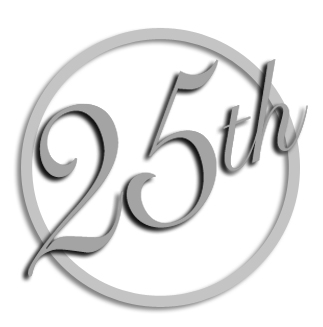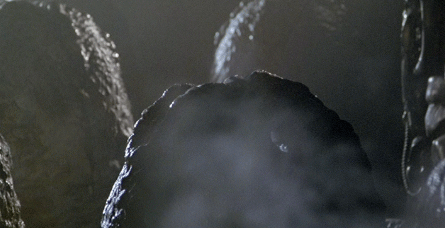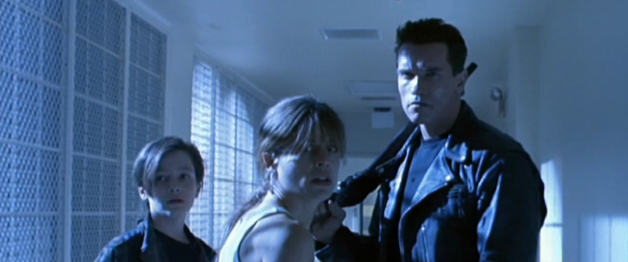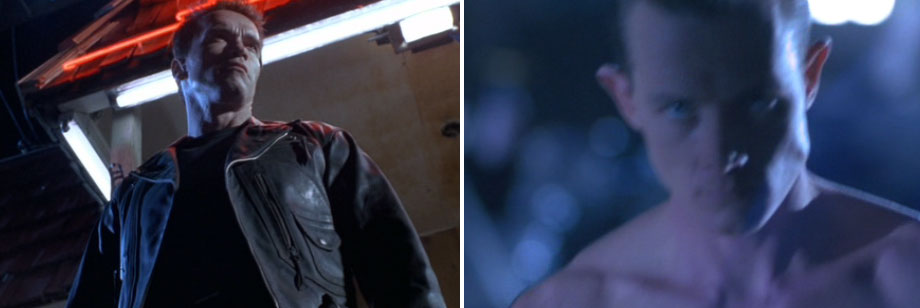By the time Point Break emerged in the summer of 1991 I was already a fan of Kathryn Bigelow having obsessed over Near Dark (1987) on VHS in, I think, 1990? I was not disappointed since Point Break has at least a couple of sequences in it that made good on Near Dark's terrifying bar massacre for the sheer "finger lickin' good" adrenaline that pumps through them. When I think of great action direction the foot chase sequence in Point Break always comes to mind if I don't get stuck in James Cameron oeuvre. With the recent rebirth of both Bigelow (The Hurt Locker) and Cameron (Avatar) perhaps there is hope for action cinema still?
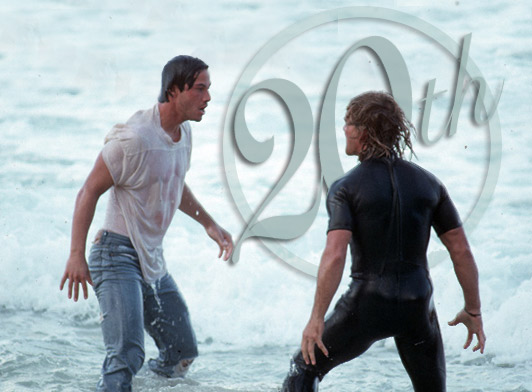
Online searches for Point Break screencaps reveal yet again the dearth of movie images online from the early 90s (just before the internet took over, natch) so we can't marvel at Kathryn Bigelow's generous attention to Keanu Reeve's wetsuit ass or the way his wet bangs cling so perfectly to his forehead in slow motion as if entire action sequences were shot as frame-by-frame meticulously as any frozen fashion shoot meant to be blown up on billboards everywhere.
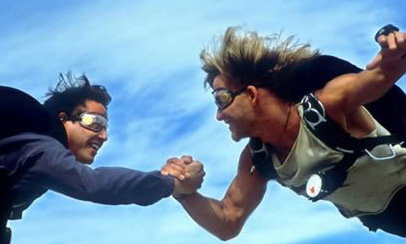 I asked Team Film Experience to share their most vivid memories of the one arguable classic in the pretty-FBI-agent-meets-new-age-bankrobbing-surfer-guru genre. Shut up! It is so a genre.
I asked Team Film Experience to share their most vivid memories of the one arguable classic in the pretty-FBI-agent-meets-new-age-bankrobbing-surfer-guru genre. Shut up! It is so a genre.
Kurt (Cinema de Gym): Collectively, my most vivid memory of Point Break is definitely the skydiving scenes. In my teens, I went through a phase where I was totally obsessed with extreme sports and extreme sports movies, perhaps because extreme sports don't exactly require the same hand-to-eye coordination of regular sports, which I extremely lacked. Point Break was one of my big, masculine extreme sports movies, along with Airborne and Drop Zone, the Wesley Snipes skydiving movie. I totally had it my head that I would skydive as soon as humanly possible, especially since my dad had done it back in the day. My thoughts have since...changed. Now I can't imagine just jumping out of an airplane. Maybe if I magically ended up in Point Break 2...
Editor's Note: If we get 150 new subscribers today (see sidebar for TFE's budget to 'dream a little bigger darling') Nathaniel will personally foot the bill to convince Kurt to skydive and share the video for your viewing pleasure. Kurt is very handsome so wouldn't you love to see him terrified and screaming in the clouds as he plummets to possible death?!? If we reach 300 paid subscribers this week (the goal) Nathaniel, whose father has also sky-dived and who is also terrified at the thought of leaping from a plane, will do it with him. Editor's Note Pt 2: The Film Experience accepts no responsibility if anyone dies while trying this.
Craig (Take Three): What I remember most is Kathryn Bigelow showing 99% of her action-filmmaker peers of the time exactly how action cinema is done 100% of the time.
Michael (Unsung Heroes): All my strongest memories of Point Break involve Nick Frost's anguished Keanu interpretation in the movie Hot Fuzz, so methinks I may be due for a refresher viewing of Bigelow's surf/heist opus.
JA from My New Plaid Pants: I've been meaning to revisit it but I was never a big Point Break fan as a kid. Even back then surfer talk set my nerves on edge. But the first thing I think of is that post-coitus shot of Keanu and Lori Petty in bed where she's about a hundred thousand percent butcher than he is. He looked like a pretty porcelain doll and she was this motorcycle mama that was just gonna pick him up and smash him on the floor.
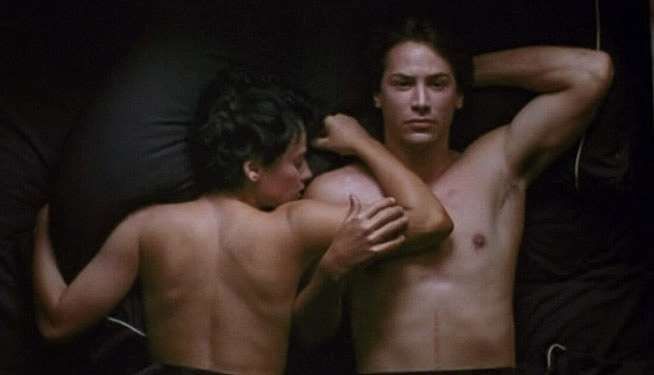
Ha! I love that image, too. Whatever happened to Lori Petty? Ah well. At least she'll always have the early 90s see also: A League of Their Own and Tank Girl.
P.S. Team TFE is looking for a couple of new members to gear up for Oscar season. If you consider yourself a fine writer who is able to get interesting fun points across in short bloggy doses (no current blog is necessary if you have samples), understand TFE's voice (i.e. you "get" and enjoy the site) and live in a major market (and can thus get to screenings or festivals), contact Nathaniel at film experience (at) gmail (dot) com.
 Saturday, July 23, 2011 at 7:30PM
Saturday, July 23, 2011 at 7:30PM  And, most significantly, everyone’s favorite Hollywood pothead and two-time Oscar nominee, Woody Harrelson (you heard me right, Matthew McConaughey), turns the big 50 today.
And, most significantly, everyone’s favorite Hollywood pothead and two-time Oscar nominee, Woody Harrelson (you heard me right, Matthew McConaughey), turns the big 50 today.  What’s your favorite performance by Mr. Woodrow Tracy Harrelson?
What’s your favorite performance by Mr. Woodrow Tracy Harrelson? 


